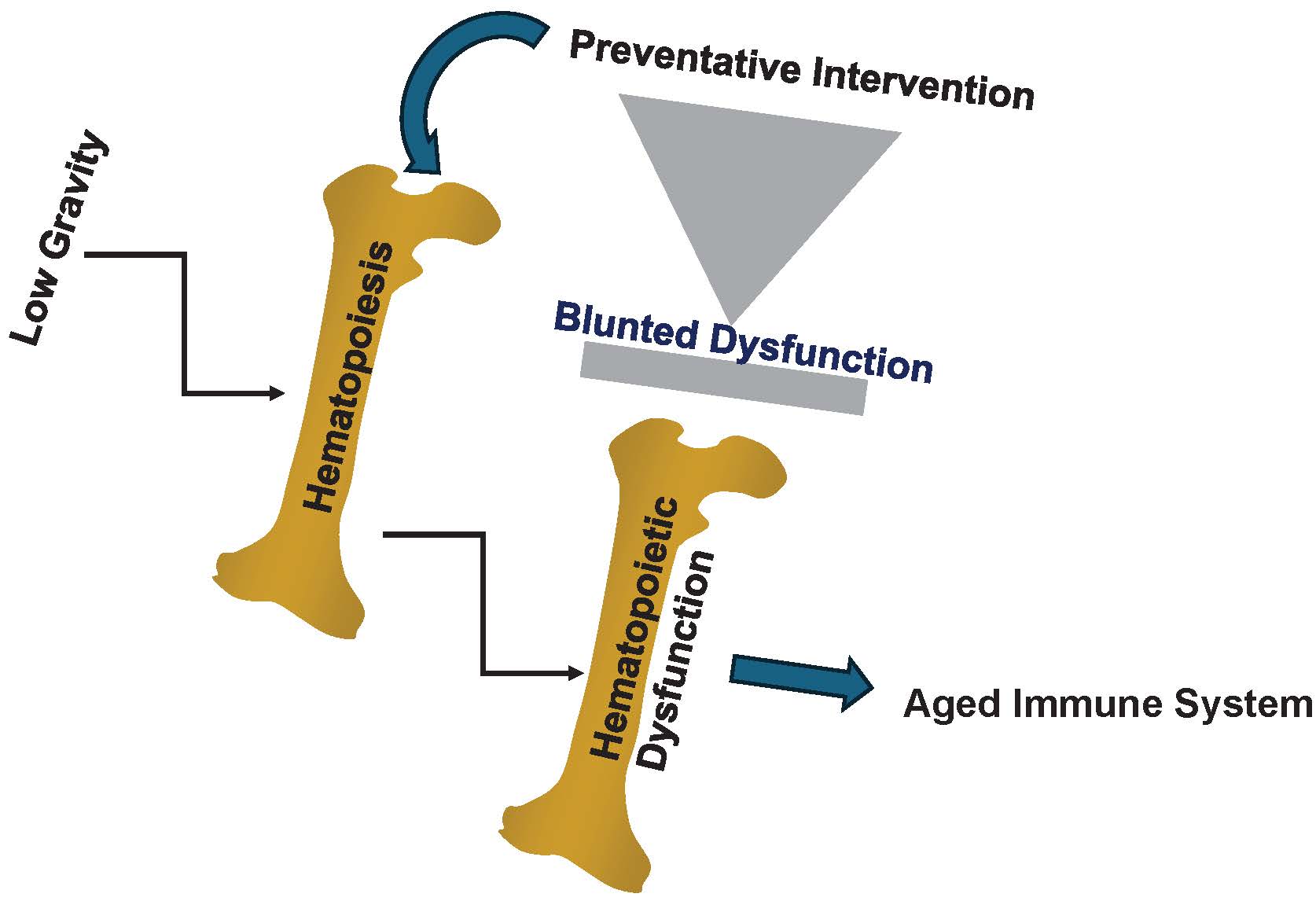Aerospace Medicine – An Evolving Field to Mitigate and Treat Organ Dysfunction Partly Caused by Premature Aging in Low Microgravity
DOI:
https://doi.org/10.13052/ijts2246-8765.2024.032Keywords:
Aerospace medicine, immune aging, nephrology, psychology, radiation, hematopoiesisAbstract
Space medicine is a branch of aerospace medicine, which is a crucial field, albeit with minimal research. Research at the International Space Station and other endeavors has provided insights into how loss of gravity could affect the physiological functions of humans. Organs such as the heart could begin to deteriorate with lack of resistance from the planet. The musculoskeletal system, which is the anatomical backbone, may struggle to support the individual’s structure. The cardiovascular system will be inefficient with respect to circulation, leading to other organ dysfunction. Radiation in space, also known as cosmic radiation, is caused by many different celestial bodies such as stars, sun, supernovae, and black holes. The Earth’s magnetic field is a crucial component to protect humans from harmful radiation. However, once humans venture beyond the protective confines, the body becomes exposed to dangerous elements that pose a significant threat to safety. Living in microgravity also has detrimental effects on organisms’ brains. These include but are not limited to sustained effects on circadian rhythm, emotional dysregulation, and cognitive dysfunction. This article discusses the threat of premature aging during long- and short-term times in space due to high risks associated with space travel. Improvement of clinical intervention is hindered by a lack of research and development, which is needed to fundamentally address these risks.
Downloads
References
Tomasevic-Todorovic S, Vazic A, Issaka A, Hanna F. Comparative assessment of fracture risk among osteoporosis and osteopenia patients: A cross-sectional study. Rheumatol: Res Rev. 2018;10:61–6.
Vozoff M, Couluris J. SpaceX Products-Advancing the Use of Space. AIAA SPACE 2008 Conference & Exposition.
Virgin Galactic. New Space. 2013;1[4]:167–70.
Saccani L. The Dream Chaser Spacecraft: Changing the Way the World Goes to Space. In: Ferretti S, ed. Space Capacity Building in the XXI Century. Cham: Springer Intl Publishing; 2020:123–8.
Rayman RB. Aerospace medicine: challenges and opportunities. Aviat Space Environ Med. 2005;76(10):992–6.
Miquel J, Souza KA. Gravity Effects on Reproduction, Development, and Aging. In: Bonting SL, ed. Adv in Space Biol Med: Elsevier; 1991:71–97.
Baca J, Martinez M, Coles S, Garcia A, Berthelot D, McCumber J, et al. Modular multi-motor exercise system for space exploration. Applied Sci. 2020;2(4):518.
Rangdal A, Petryna, Andrew, Shadpoor, Bobak, Sherman, Lauren S., Homsi, Emile. A Theory of Gravitational Generation to Mitigate Space-Induced Low Gravity – Relevance to Premature Aging in Space. Intl J Transl Sci. 2024;1:77–99.
Cartmell M, McKenzie D. A review of space tether research. Progress in Aerospace Sci. 2008;44(1):1–21.
Smith S, Abrams S, Davis-Street J, Heer M, O’Brien K, Wastney M, et al. Fifty years of human space travel: implications for bone and calcium research. Annu Rev Nutrition. 2014;34:377–400.
Garrett-Bakelman FE, Darshi M, Green SJ, Gur RC, Lin L, Macias BR, et al. The NASA Twins Study: A multidimensional analysis of a year-long human spaceflight. Science. 2019;364(6436):eaau8650.
Garrett-Bakelman FE, Darshi M, Green SJ, Gur RC, Lin L, Macias BR, et al. The NASA Twins Study: A multidimensional analysis of a year-long human spaceflight. Science. 2019;364(6436):eaau8650.
Sampson TR, Mazmanian SK. Control of brain development, function, and behavior by the microbiome. Cell Host Microbe. 2015;17(5):565–76.
Lee AG, Mader TH, Gibson CR, Brunstetter TJ, Tarver WJ. Space flight-associated neuro-ocular syndrome (SANS). Eye (Lond). 2018;32(7):1164–7.
Yang J-W, Song Q-Y, Zhang M-X, Ai J-L, Wang F, Kan G-H, et al. Spaceflight-associated neuro-ocular syndrome: a review of potential pathogenesis and intervention. International J Ophthalmol. 2022;15(2):336.
McCarthy I, Goodship A, Herzog R, Oganov V, Stussi E, Vahlensieck M. Investigation of bone changes in microgravity during long and short duration space flight: comparison of techniques. Eur J Clin Invest. 2000;30(12):1044–54.
Hwang H, Rampoldi A, Forghani P, Li D, Fite J, Boland G, et al. Space microgravity increases expression of genes associated with proliferation and differentiation in human cardiac spheres. Microgravity. 2023;9(1):88.
Walls S, Diop S, Birse R, Elmen L, Gan Z, Kalvakuri S, et al. Prolonged exposure to microgravity reduces cardiac contractility and initiates remodeling in Drosophila. Cell Reports. 2020;33(10).
Anzai T, Frey M, Nogami A. Cardiac arrhythmias during long-duration spaceflights. J Arrhythmia. 2013;30.
Arone A, Ivaldi T, Loganovsky K, Palermo S, Parra E, Flamini W, et al. The burden of space exploration on the mental health of astronauts: a narrative review. Clin Neuropsychiatry. 2021;18(5):237.
Stampi C. Sleep and circadian rhythms in space. J Clin Pharmacol. 1994;34(5):518–34.
Greco SJ, Ayer S, Guiro K, Sinha G, Donnelly RJ, Markos H, et al. Restoration of aged hematopoietic cells by their young counterparts through instructive microvesicles release. Aging (Albany NY). 2021;13(21):23981.
Liu A, Guo E, Yang J, Yang Y, Liu S, Jiang X, et al. Young plasma reverses age-dependent alterations in hepatic function through the restoration of autophagy. Aging Cell. 2018;17(1):e12708.
Bouchard J, Villeda SA. Aging and brain rejuvenation as systemic events. J Neurochem. 2015;132(1):5–19.
Paul AM, Mhatre SD, Cekanaviciute E, Schreurs A-S, Tahimic CG, Globus RK, et al. Neutrophil-to-lymphocyte ratio: a biomarker to monitor the immune status of astronauts. Frontiers in Immunol. 2020;11:564950.
Walsh K, Raghavachari N, Kerr C, Bick AG, Cummings SR, Druley T, et al. Clonal hematopoiesis analyses in clinical, epidemiologic, and genetic aging studies to unravel underlying mechanisms of age-related dysfunction in humans. Frontiers in Aging. 2022;3:841796.
Eskandeari F, Sternberg EM. Neural-Immune Interactions in Health and Disease. Annals NY Acad Sci. 2002;966(1):20–7.
Shapshak P, Balaji S, Kangueane P, Chiappelli F, Somboonwit C, Menezes LJ, et al. Global Virology III: Virology in the 21st Century. 1st 2019. ed. Cham: Springer International Publishing; 2019.
Almon AJ. Developing predictive models: Individual and group breakdowns in long-term space travel. Acta Astronautica. 2019;154:295–300.
Liakopoulos V, Leivaditis K, Eleftheriadis T, Dombros N. The kidney in space. Intl Urol Nephrol. 2012;44:1893–901.



